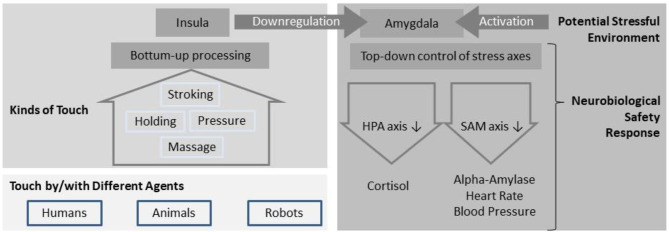Figure 1.
Mechanisms of touch potentially acting as safety signal: In a dangerous environment, the amygdala is activated in order to allow for rapid reactions via the stress axes (e.g., fight or flight response). Tactile perception from different social and non-social contexts is processed in the insular cortex, which has a regulating influence on the amygdala and can therefore dampen the stress response. A calming or relaxing effect of touch might therefore be based on signaling safety (absence of danger) on a neurobiological level.

